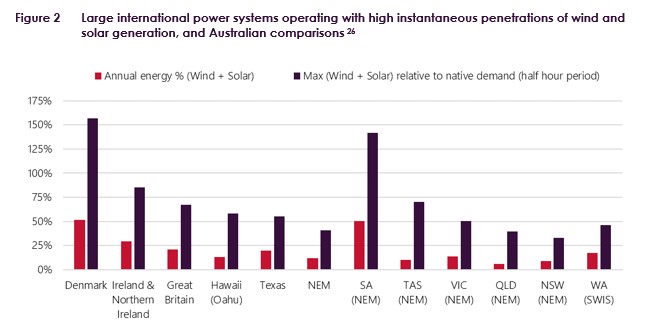As part of our Renewable Integration Study, AEMO has completed an international review to determine how Australia compares with other comparable global power systems.
Our industry is rapidly evolving. The transformation of the power system is presenting new engineering challenges that must be addressed and, as the energy market operator, AEMO is responsible for managing this transition in an orderly and proactive fashion, collaborating closely with industry stakeholders and clearly mapping out the road ahead.
To facilitate and expediate a deeper understanding, AEMO has committed to developing in depth analysis to complement the development of the 2020 Integrated Systems Plan (ISP) process. This Renewable Integration Study (RIS) will inform future ISPs as well as providing foundational engineering advice to government and administrative policy-makers to support their consideration of future changes needed in electricity regulations and market designs.
As the first deliverable from the RIS, AEMO has undertaken a review on how Australia compares with other international power systems. This insights paper explores how comparative jurisdictions are managing the technical requirements of their power systems during periods of high wind and solar generation, and what practices appear effective from a technical perspective.
Key insights from the review include:
- Parts of Australia are already experiencing some of the highest levels of wind and solar generation in the world, including one of the highest levels of residential solar PV (see graph above).
- Successfully integrating high levels of distributed energy resources like rooftop solar photovoltaics (PV) requires an increasing level of visibility, predictability, and controllability of these small distributed devices. Australia can learn from several jurisdictions in its approaches to these challenges.
- Managing variability and uncertainty is increasingly challenging at higher levels of wind and solar generation. Australia can learn from others in their approaches, including the assessment of system ramping requirements and fleet capability.
- Australia should consider international approaches to frequency management in high renewable generation systems, including approaches to maintaining sufficient inertia and enablement of primary frequency response on all generators.
- International power system operators have taken a staged approach to operating power systems with progressively less synchronous generation online. A similar approach could be considered in Australia.
To read the full international insights report, please click here. And stay tuned for more as we develop and progress our technical insights, both global and domestic.
For all the latest news, insights and analysis from the Australian energy industry subscribe to our fortnightly newsletter and download the new Energy Live app on Apple and Android.








